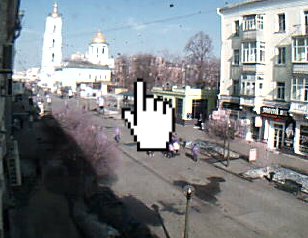Cental Asia Regions
Historically Central Asia has always been associated with roving peoples who inhabited its territory and with the Great Silk Road. It always was a place, where people, goods and ideas gathered from different parts of Eurasian continent (Europe, the Near East, Southern and Eastern Asia.) Traditionally Central Asia consists of such countries, as the Kyrgyzstan Republic, Tajikistan, Turkmenistan and Uzbekistan. Sometimes Kazakhstan is also included.
The Kyrgyzstan Republic is a state in the Northeast of Central Asia, mainly within western and central parts of Tian Shan and northern part of Pamir. Kyrgyzstan is bordered by Kazakhstan to the north, Uzbekistan to the west, Tajikistan to the southwest and People’s Republic of China to the east and southeast.
Official languages are Kyrgyz (state language) and Russian (official one). Its capital city and the largest city is Bishkek. Kyrgyzstan is a parliamentary republic with the national currency Kyrgyzstan som.
Economy of the Kyrgyzstan Republic consists mostly of industry and agriculture. More than half of the working-age population is involved in agricultural sector. About half a million of Kyrgyzstan citizens leave the country to earn money abroad, first of all in Russia. Industry is represented with energetics and extractive sector. There are also enterprises in light and food industry.
Tajikistan is a state in Central Asia, former the Tajik Soviet Socialist Republic in USSR. It is a landlocked country situated in the foothills of Pamir. It is the smallest Central Asia state. Afghanistan borders on it to the south, Uzbekistan to the west, Kyrgyzstan to the north and People’s Republic of China to the east. The capital of Tajikistan is Dushanbe.Tajikistan is the only Persian speaking country in Central Asia.
Most part of population of the republic is the Tajiks (79,9 %). Besides, about 17 % of the population are the Uzbeks and the Kyrgyzs (1,3%) and less than 1 % is Russians.
Tajikistan people mostly have Sunni Islam belief.
By volume per capita GDP the republic takes the 43d place in Central Asia.
Turkmenistan is a state in Central Asia. It borders on with Afghanistan and Iran to the south, Kazakhstan and Uzbekistan to the north, and it is bounded by landlocked Caspian Sea to the West.
Form of Government is presidential republic. A head of the state is a president elected by direct ballot voting for 5 year term. Until December 21, 2006 the President for life of Turkmenistan was Saparmurat Niyazov who changed his name to Turkmenbashi. Today the President is Gurbanguli Berdimuchamedov. Legislative body is Mejlis (Parliament, 125 members). Deputees are elected for 5 years in single-mandate constituency. The competence of Mejlis is adoption of laws, acceptance and reforming of the Constitution.
Uzbekistan is a state in the central part of Central Asia. The names of the state “The republic of Uzbekistan” and “Uzbekistan” are equal. It borders on Kyrgyzstan to the northeast, Turkmenistan to the southwest, Tajikistan to the southeast and Afghanistan to the south.The borderline is 6621 km. Uzbekistan is a landlocked country.
It is a fast developing country with rather advanced economy and agriculture. About two thousands of plants and factories produce planes and tractors, cars and buses, machines for cotton and textile industries. There are mining (extractive), chemical and ferrous-metal industries, including refractory metals and alloys production.
Economy of Central Asia
Speaking about economical position of Central Asia, it is interesting to know, that economy expansion rate of Kazakhstan is 10 %, Uzbekistan – 8 %. Turkmenistan doesn’t fall behind a lot. Countries of Central Asia actively increase export and gold and currency reserves. Industrial production in most parts of these countries increases at the same level as in Ukraine. Moreover, Uzbekistan sets records! It has 12,1 % of increment of growth. And this is on the background of relatively stable inflation.So the President of Kyrgyzstan promised to complete the privatization of state enterprises in order to attract investments. Не wants absolutely all state enterprises to gain the form of joint-stock companies with an open public offering of their shares on a stock market. With the same eagerness Uzbekistan started to improve the business environment. Now he almost fully exempts investors from taxes and fees in many spheres. The exception is only VAT. But the very country that had the brightest investment “renascence” was Turkmenistan. Today “gas store” is preparing to restructuring of enterprises, makes tax deduction for companies, which decided to work on Turkmenistan market, fights against bureaucracy.
Together with economic increase also the domestic market enlarges, and the consuming capacity of all the 60 million Central Asia population grows.
But the main aspect that can astonish everyone who was not interested in the economy of this region is its investment policy. Central Asia offers excellent conditions for foreign business to open their markets. Step by step it becomes an investment Mecca.
Recently the heads of the states in Central Asia began to renew their investment image. They are not going to content themselves with the role of raw “store” for developed countries anymore. They want to build economy with a high level of added value. This is why they began a comprehensive struggle for attraction of foreign investments.
So the President of Kyrgyzstan promised almost complete privatization of state enterprises in order to attract investments. Не wants absolutely all state enterprises to gain the form of joint-stock companies with an open public offering of their shares on a stock market. With the same eagerness Uzbekistan started to improve business environment. Now he almost fully exempts investors from taxes and fees in many spheres. The exception is only VAT. But the very country that had the brightest investment “renascence” was Turkmenistan. Today “gas store” is preparing to restructuring of enterprises, makes tax deduction for companies, which decided to work at Turkmenistan market, fights against bureaucracy.
“Reconstruction” of business-climate touched most weak points of legislation that earlier made foreign investors avoid Central Asia countries. Expected result is an investment boom into economies of these countries.
Currently EU countries, South Korea and Russia actively enlarge their economical presence in the region. China made here a real investment blitzkrieg. The potential of this region now is so big, that even the USA, “the main fighter” for democratic values, is ready to shut its eyes partially to the problems with democracy and human rights in states of Central Asia. Recently Washington even began to develop the project of “Big Central Asia” – an economic integration of Central Asia countries under the aegis of the USA.The main sphere of investments is, of course, the oil and gas sector. This is where 2/3 of capital investments into the region falls. But more and more often investors take a decision to pump into other spheres: Russia – in telecommunications, western business – in agriculture, mining and processing industries. China works simply everywhere. South Koreans took fancy to car production. And now the creation of their work in Uzbekistan is “Uz-Daewoo Auto”, which is known even to Ukrainian carlovers.Even results of such investment attention are impressing. While Ukraine attracted about 20 bln USD of foreign direct investments during the years of its Independence, Kazakhstan did in three times more. To tell the truth, Astana takes four from five dollars of investments in Central Asia lands into its own cheek. The other four states divide the fifth dollar. At the same time they have started to surpass Kazakhstan by the rates of annual increase in FDI.
Oil and Gas. Kazakhstan today is the eights in the list of world exporters of gas, and until 2015 it is going to reach TOP-10 of oil exporters. Uzbekistan is also getting a hustle on boasting by its oil and gas subsoil riches.
In Uzbekistan, Kyrgyzstan and Tajikistan another treasure is hidden, it is an electric power production. For example, more than a half of all Central Asia water resources is formed at the territory of Tajikistan. The basis of energy industry is hydroelectric plants built in Soviet times. But all these electric power stations urgently need modernization. Besides, the potential of hydro energy resources of the state are used only for 5%. That is why one of the advantages of Tajikistan is building of new hydroelectric plants and electric power line.
Treasure for mechanical engineers. Nearly the most sweet spot on the market of these countries is machinery production supplies. For example, in Kazakhstan today the capacity utilization factor in extractive industry is more than 90%. In processing industry – 70%. Volumes of industry are constantly increasing, but production facilities are morally and physically outmoded. That’s why a total modernization is necessary.Transport and infrastructure treasure. Central Asia is a region on the crossroads of Asia, EU, India, Iran, Pakistan and RF. That’s why a super plan of the heads of this region states is to lead out Central Asia from transport periphery to the world central traffic flows. During the next decade Central Asia countries have to create six new transportation corridors.Central Asia is having now a real building boom. For the time being “fleets” from this boom are taken by representatives of Turkish building sector. It is profitably not only to take part in building projects, but also to invest money in development of own building materials production. For example, only in Uzbekistan there are about 49 deposits of building stone.


